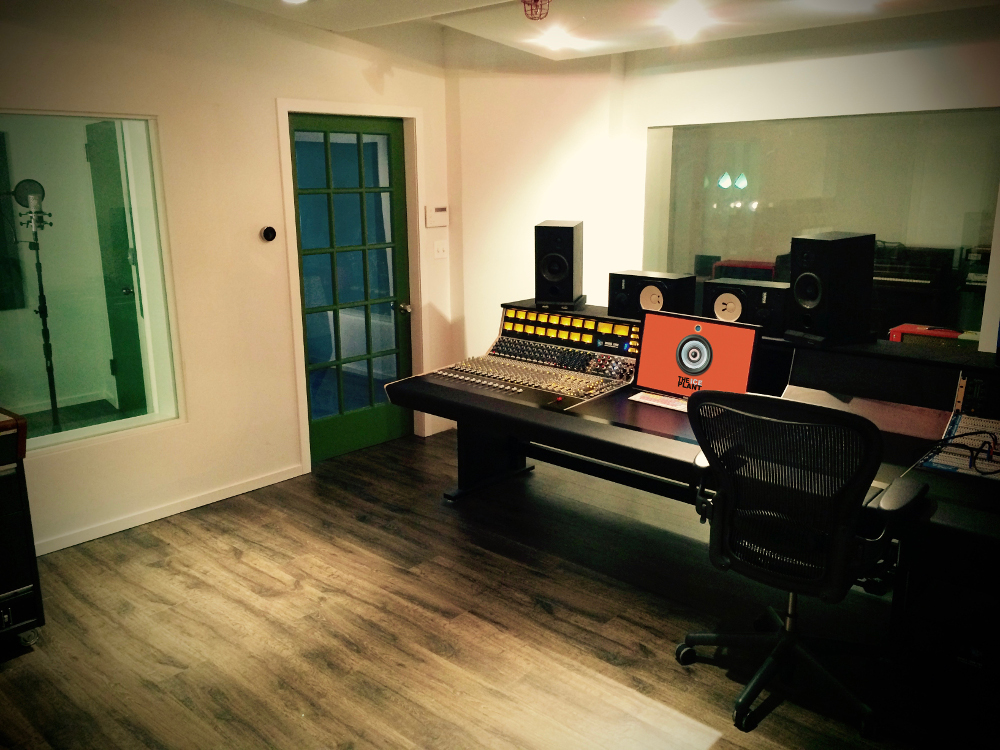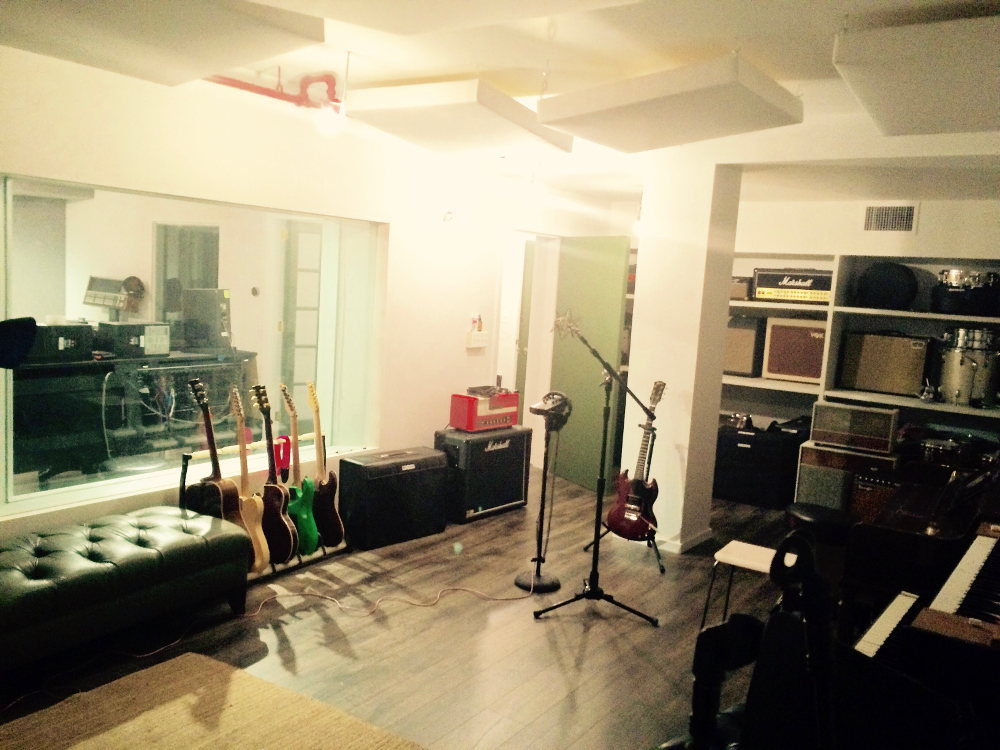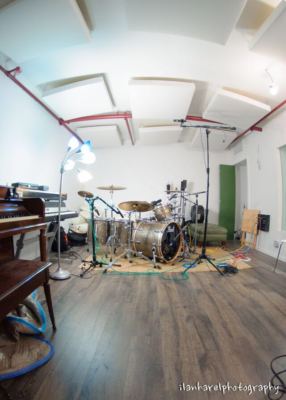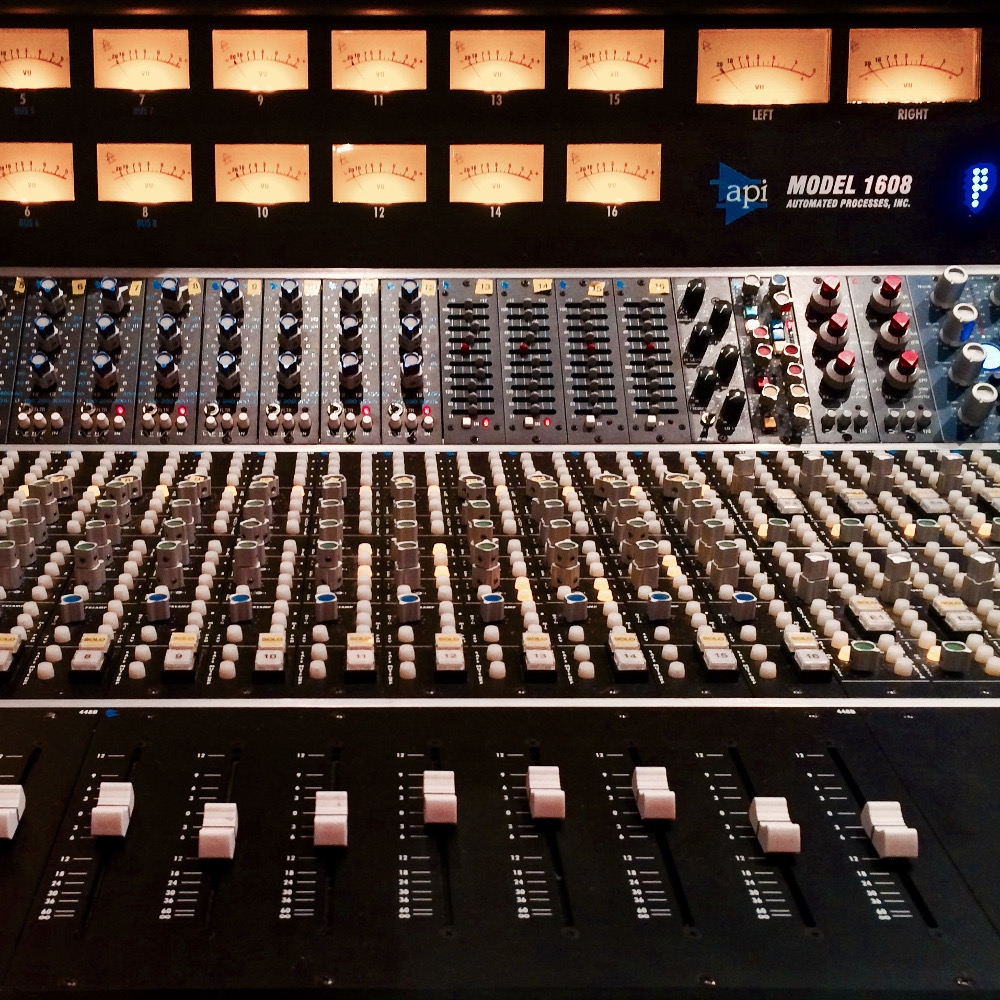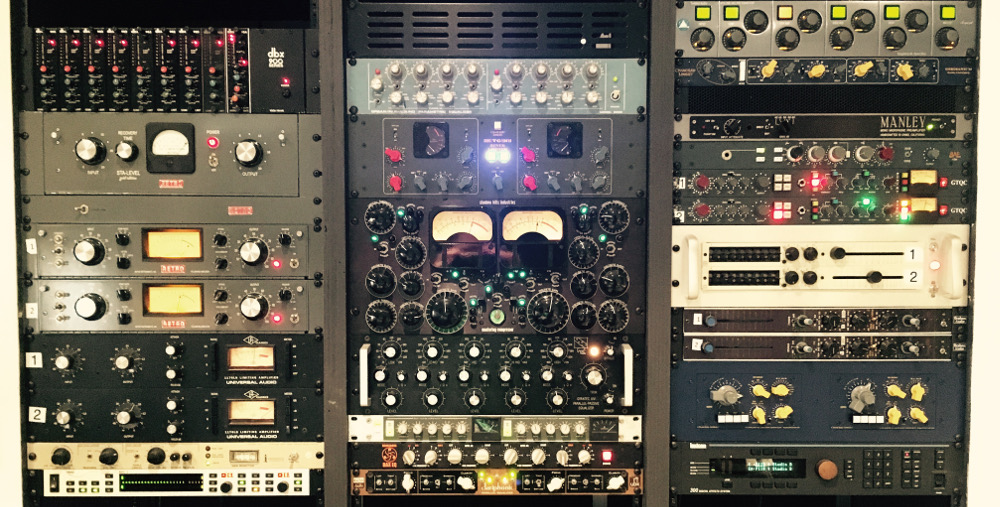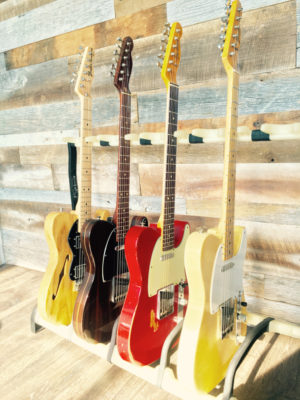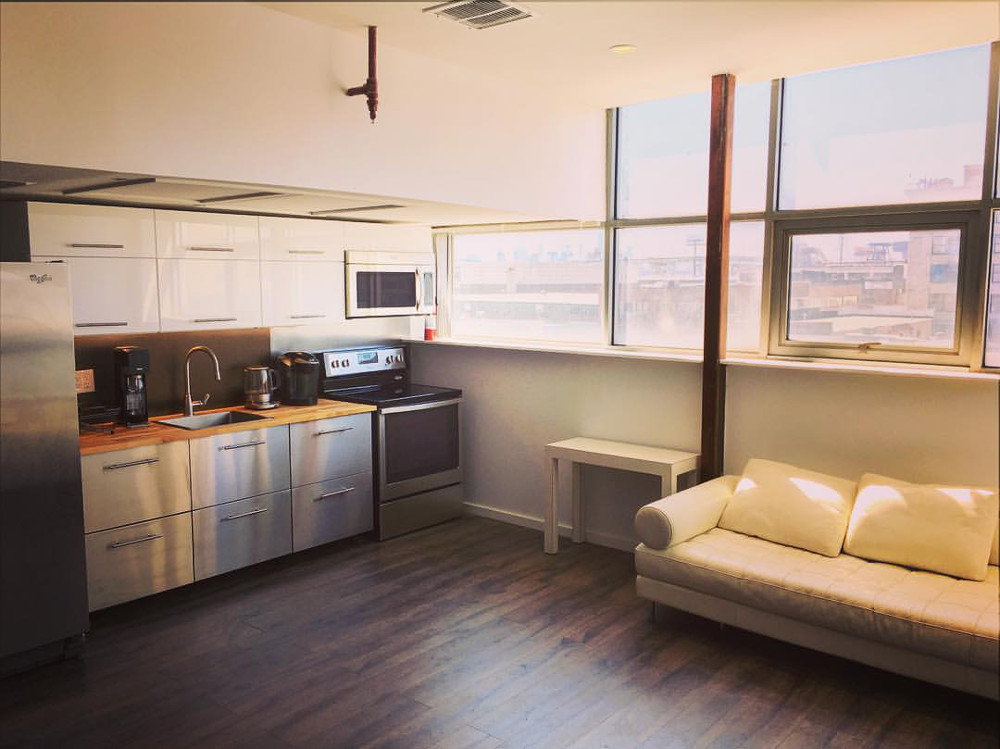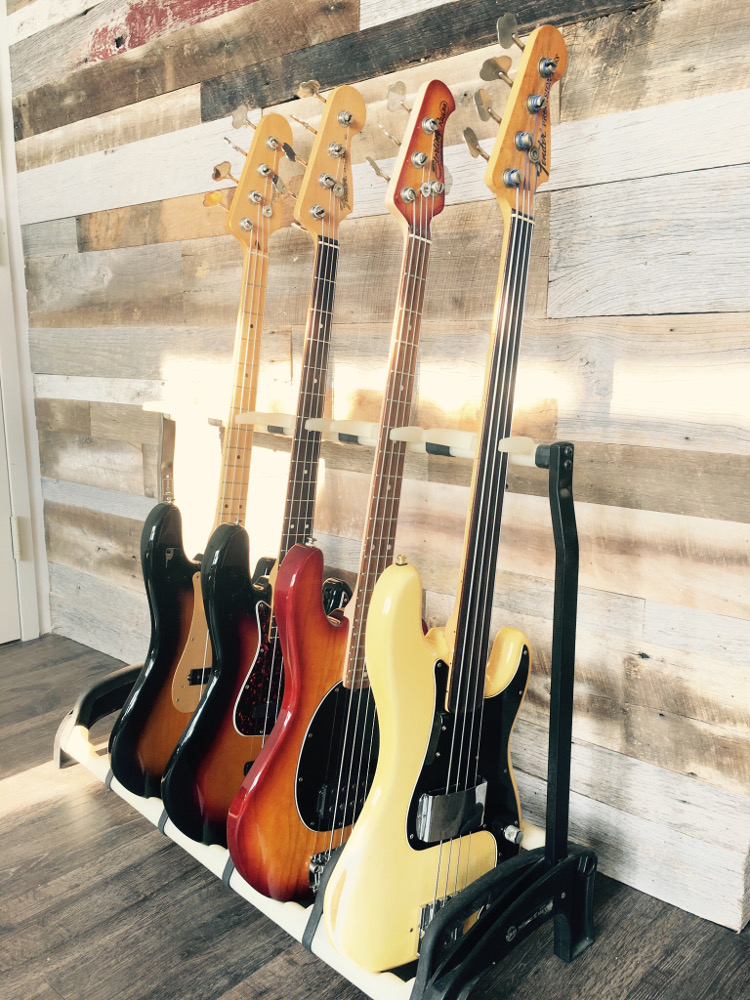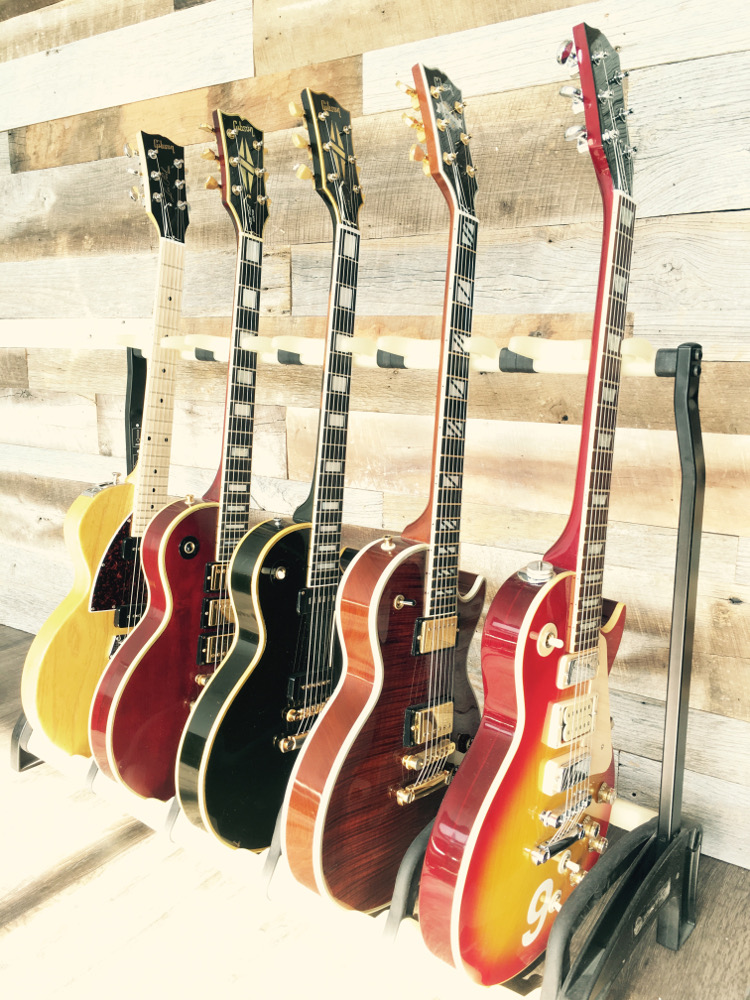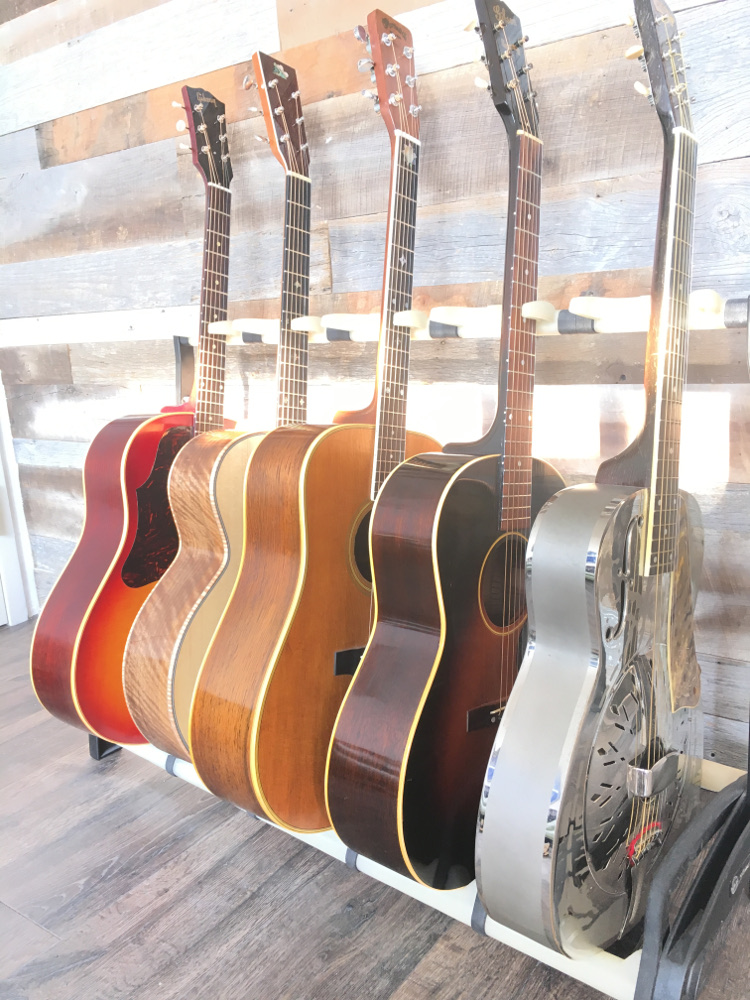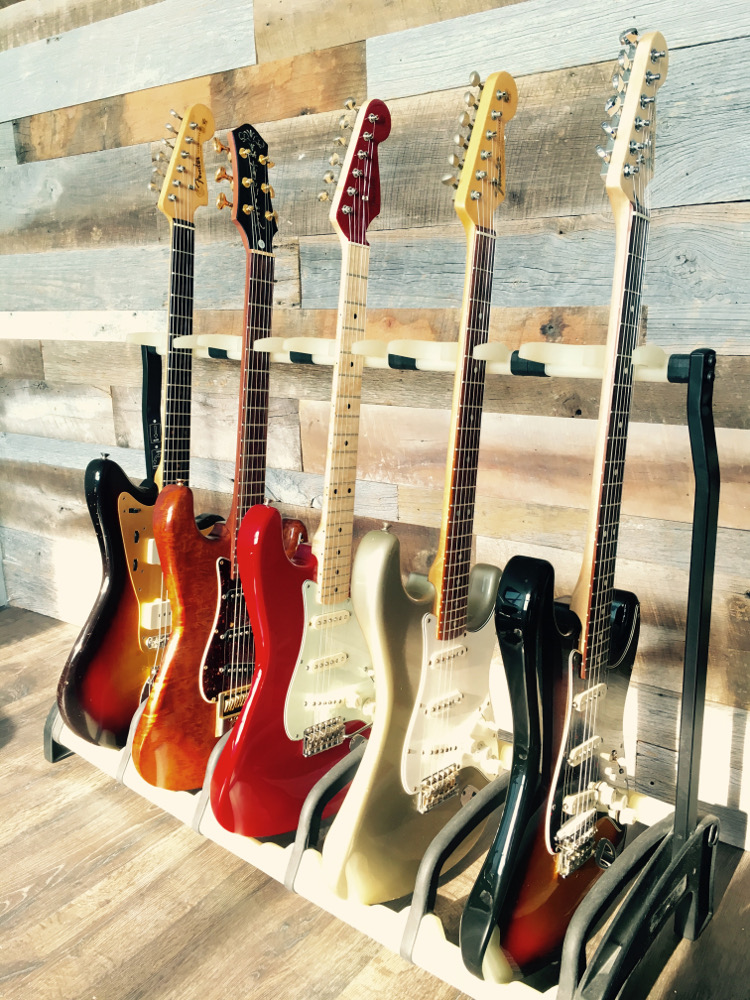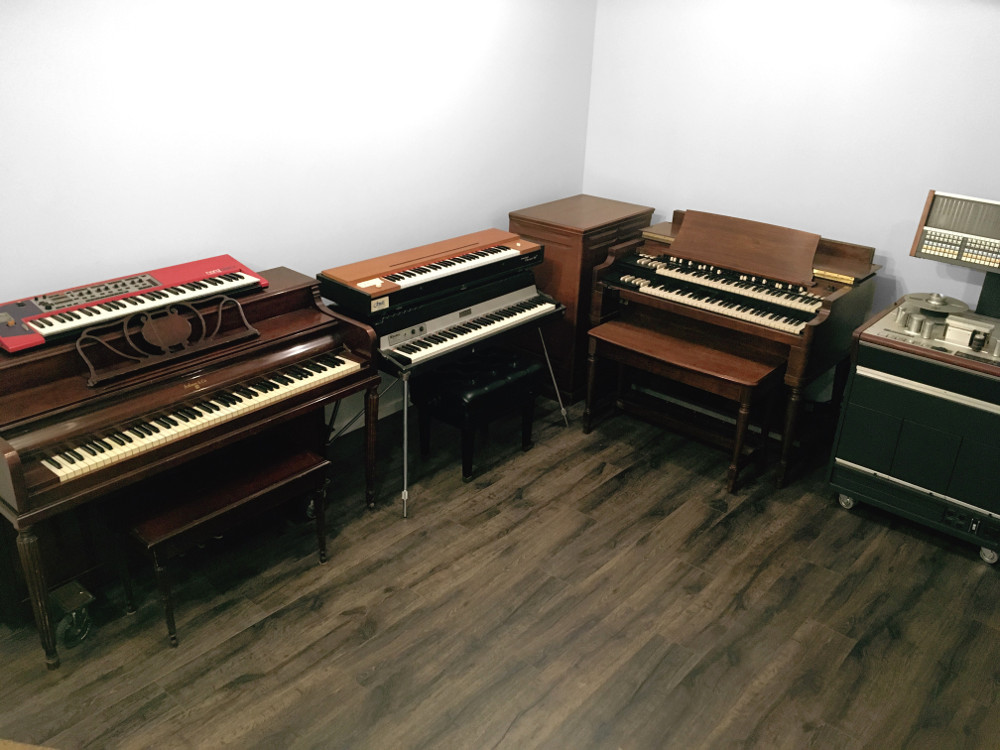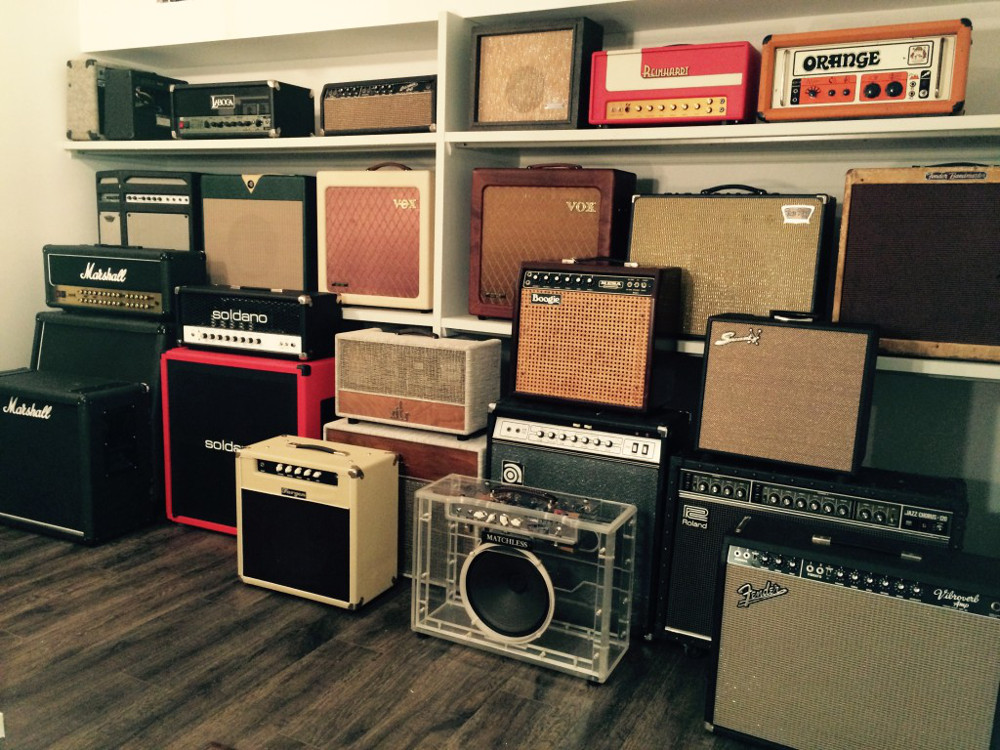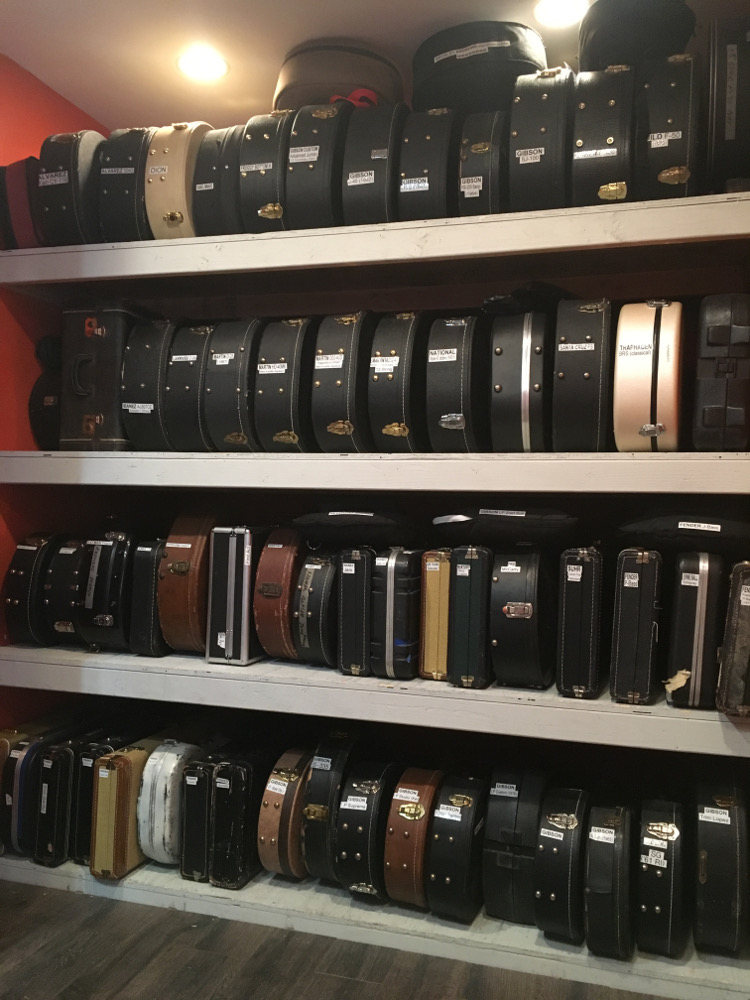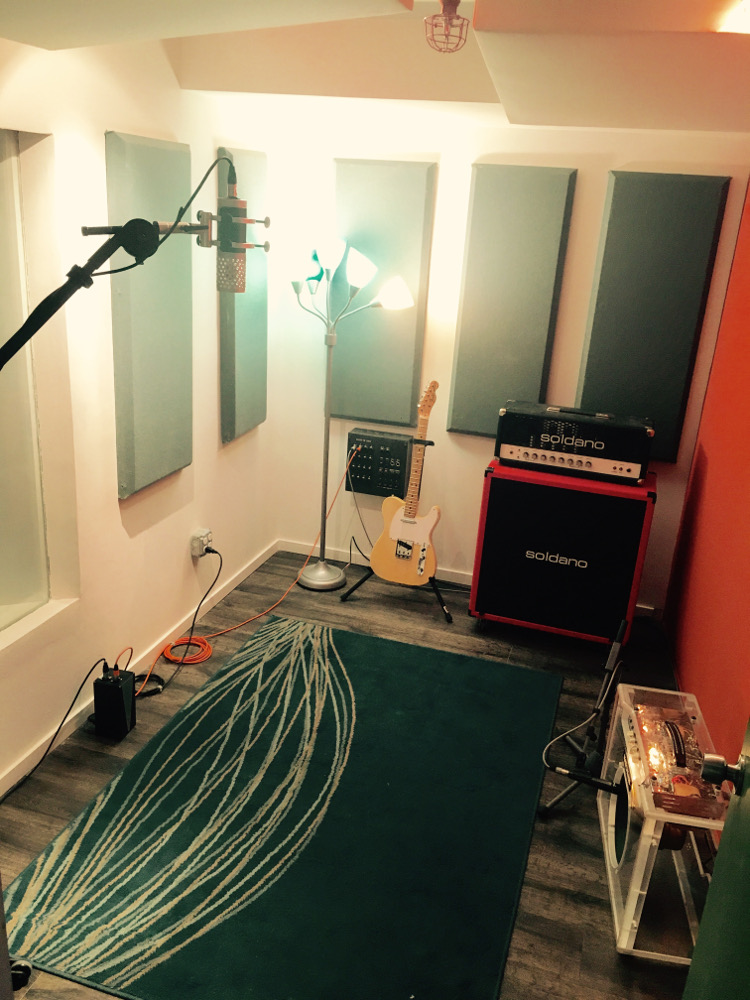“New Room” Recording Studio: The Ice Plant – Long Island City, Queens
Things are heating up in Long Island City.
That’s where you’ll find The Ice Plant, the newly hatched second generation of the recording/mixing facility that aims to be “a destination studio for local musicians.” What do founders Wayne Silver and Adam Zirkin mean by that?
In other words, this bright and spacious set of rooms, anchored by an API 1608 and a massive array of onsite instruments and amps, is rolling out the welcome mat for bands and producers – even if they aren’t the beneficiaries of the major label budget.
The seeds of Silver and Zirkin’s sonic partnership were sown long ago in childhood — they went from kids playing kickball to musicians on tour. When the harsh realities of life on the road converged with a growing appreciation for gear, engineering, producing and the recording process, the next step was a no-brainer: Get the f*#! out of the van, and re-orient their musical talents.
They eventually outgrew their first facility, launched in Brooklyn circa 2012, and now all the five boroughs benefit from their centrally located second act. Designed by Francis Manzella, the new version of The Ice Plant sports sparkling acoustics, gear out to here, and those aforementioned instruments that are available to all who enter – it’s a prime collection that includes almost 70 guitars, a highly distinguished Bösendorfer grand piano and Hammond B3/Leslie 122, comfy light-filled lounge, plus much more.
Want to know more about the coolest new studio east of the East River? Read on!
Facility Name: The Ice Plant
Website: http://www.theiceplant.com
Location: Long Island City, Queens
Before I Started This Studio: My partner, Adam Zirkin, and I are both lifelong musicians and we’ve been friends since elementary school. We actually grew up five houses away from each other. We’ve been in various bands together and separately over the years, including our first band when we were 13 — he’s a pianist and I’m a guitarist.
It was while we were making our own bands’ records when we got bit by the studio bug. We’ve played on each other’s records, and made records together over the years. I think at first, Adam was more into the engineering side of the process, and I was more into the idea of being a producer. Though over time, it’s all kind of merged into a single overarching process here.
As time went by, it became clear that the life of a touring rock musician was getting too difficult for us to pursue. At different times, Adam and I had moved on to other careers. He went into finance, and I went to grad school to get my Master’s in Music Education.
By this point, we had accumulated some quality gear. Adam had put together an incredible home studio setup with great outboard gear, much of which currently resides in our racks. I had a decent amount of guitar equipment. Eventually, these things took up too much space in our homes. Adam called me up a few years back and said, “We’ve got some really good gear, why don’t we put it all together and start our kind of studio and make some records for people?” That was the beginning of The Ice Plant. It kind of became our band.
It just felt like the next logical step was for us to do for other people what we had done for ourselves. Why just make our own records with this great setup, when we can collaborate with other artists and help them make their records? As professional musicians ourselves, we feel comfortable on both sides of the glass, and it’s been something that has been very useful to the artists we work with.
So over the past few years, we just built upon the idea of making a boutique-style studio that’s accessible and affordable to working musicians in NYC. We’ve also filled out our gear collection in the process!
What We’ve Done: Recent projects include: Jared Grimes, Tempest City, David Gillespie, The Blackfires, Afterbirth Monkey, The Goddess Lakshmi, scoring the feature film Scramble
Location Location Location: We picked our spot in Long Island City because it’s a great centralized location. We’re easily accessible from Manhattan, Brooklyn, Queens and Long Island. We’re just a 3-minute walk from the 7 train, and also easily accessible from the N,Q,E,M,R, & G subway lines.
For clients who drive, we are located right off both the Queensboro Bridge and the Long Island Expressway, and our building has a free parking garage on the ground level.
Date of Birth: 2010. Current facility: 2015
Ideal Designer: Our studio was designed by Francis Manzella of FM Design, Ltd. He’s designed some of the most spectacular studios in the world. He knows as well as anyone out there what needs to be done to make a room sound good, perform well, and have solid isolation.
We’re very happy with how it came out! We appreciate all the work that he and Bill Seegmuller did for us. Their attention to detail is quite remarkable. Also, special thanks also to Alexis Berthelot, who did an amazing job wiring the studio.
What We’re All About: We’re happy to work with any artist, at any stage in production.
That said, we feel we’re at our best when we help the artist see her or his vision through, from the beginning of tracking to the final mix. I prefer to have a hand in the creative side of things, to whatever extent an artist needs it. As a producer, composer, and guitarist, I have plenty to offer in addition to engineering, and I’m always happy to bring those skills into a project, whenever it serves the record.
As for the capabilities of the space, we have a comfortable 350-square foot live room, and a 90-square foot iso room. Our lounge, storage room and sound lock also have wall panels, for the occasions that we need additional space for more involved sessions.
We also have a very comfy lounge with plenty of daylight and a view of the skyline, plus a full kitchen, TV and Wi-Fi.
Key Personnel:
Wayne Silver
Adam Zirkin
The Equipment List:
API 1608 console
Pro Tools 12 HDX/Pro Tools 10 HDX
Monitoring:
– PMC AML-1 (active)
– ProAc Studio 100/Audio Research D130
– ProAc Response 2/Audio Research D130
– Yamaha NS-10M/Bryston 4B ST
Studer A820 24 channel multitrack
Shadow Hills Mastering Compressor
Retro 176
Retro Sta-Level
various vintage pianos/keyboards
dozens of vintage/boutique guitars
dozens of vintage/boutique amplifiers
API On the Ice: We decided to go with the API 1608 because we love the sound of API, and we like that it works really well in analog and digital workflows.
The channel strips have in-line 550A and 560 EQs. The console has a built-in 500-series lunchbox that we’ve loaded up with EQs and compressors from other manufacturers. The echo sends and submaster channels offer great and very usable routing options, as well as additional inputs from the outboard rack or to receive discrete from the DAW.
We feel that the 1608 works great on pretty much everything, and that’s kind of the default choice, unless a situation calls for a different color, in which case we have quite a few different preamps, including channel strips from vintage consoles. We also have the submasters linked to our Hearback monitoring system, which makes it very easy to route audio to the artists’ mixers.
Instrumental Element: One thing that makes our studio special is our instrument collection. Being that we’re musicians as well as engineers, our love of gear extends well beyond outboard pieces. We believe that the time spent making a record should be as inspiring to our clients as possible, and providing a musician a menu of superb and rare instruments is a way to inspire a magical moment when it counts most – when recording a take.
For keyboardists, we have an 1890s Bösendorfer grand piano, and what could be the most pristine 1967 Hammond B3/Leslie 122 anywhere, among other keyboards.
For guitarists, we have a diverse collection of almost 70 guitars – all vintage, boutique, custom shop, and cool offbeat one-offs, in addition to two dozen amplifiers, also all vintage and boutique. We know that guitarists are obsessed with tone, and each piece we have covers a specific sound. If a guitarist needs a specific tone for a part, they don’t need to worry about being limited to the gear they have. Of course we’re aware that plenty of guitarists own gear that gives them their sound, and they are certainly encouraged to use their own gear.
However, the studio environment is its own world, and during guitar tracking sessions, we always keep some of our guitars on stands. At some point, guitarists usually give into temptation, even if just for an overdub. Some people will use a lot of pieces, and other times a guitarist will find one or two that work for them. It all depends on the project.
We’re Different Because: Our goal is to be a destination studio, even for local musicians, while still being affordable. We feel that with the state of the music industry such as it is, a lot of emerging artists are priced out of getting to make a record in an environment that is inspiring, comfortable, properly equipped, and properly staffed.
By offering musicians an affordable yet somewhat luxurious space, loaded with great outboard gear, and a diverse enough instrument collection that they can make a record that captures their essence — even if they come to the studio empty-handed — we can help artists create a final product that paints the best picture of their music at that point in their lives, and connects with their audience.
Sonic Inspiration: Just one? “When The Levee Breaks” by Led Zeppelin comes to mind. A perfect blend of musicianship, engineering, technique, and musicality.
If I can name a second, both Guns N’ Roses’ Use Your Illusion records. But that’s like 30 songs! I just love how those songs are all so different from each other, but they all sit so naturally together in the same sonic space.
I Engineer, Therefore I Am: I’ve grown to love engineering because it allows me to connect the process of writing a record to listening it.
Over time, it’s become a less technical and more creative process, and it’s hard for me to tell where engineering ends and producing begins at this point. At the same time, I want to be transparent, as the goal is to make the record that the artist is looking to make. Helping an artist create a work that represents her or his vision is an incredibly rewarding feeling.
If I weren’t in audio, I’d be doing… Actually, it would still be music! It would just be in the classroom instead of the studio.
Blatant Shout-out: I’m really just happy to work with artists who believe in their music, and are unique and authentic, no matter what it is — really anyone with a passion and clear vision, regardless of style or genre.
But that said, it would be fun to one day do some guitar tracking sessions with some of my favorite guitarists who would really make the most of the guitar and amp collection, be it Joe Bonamassa, Joe Perry, or G.E. Smith. As I think about it, it makes me a little sad that Paul McCartney is left-handed.
— Wayne Silver, Co-Founder, The Ice Plant
Please note: When you buy products through links on this page, we may earn an affiliate commission.







